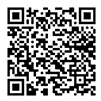Difference between order book and trade book

You've already heard about words like order book and exchange book, whether you've just started trading F&O and equities or if you're hoping to start trading electronically. So, what exactly do these words say, and how do order and trade books differ?
You've already heard about words like order book and exchange book, whether you've just started trading F&O and equities or if you're hoping to start trading electronically. So, what exactly do these words say, and how do order and trade books differ?

Open a Demat Account
Continue reading to learn more about the difference between an order book and a trade book in online trading.
Difference between an order book and a trade book
A buy/sell order book for any security or financial instrument is referred to as an order book. This list can be manual or electronic, but it is an electronic list in online trading. When a customer places an order, the order book records all of the information, including price and quantity. Each order is given a unique number that can use to refer to it later.
An order is entered into the trade book after it is completed. The trade number is assigned to the execution and the execution status reports in the trade book. Stock and futures and derivatives markets use the trading book, which includes the order book.
The order book reflects all orders placed, while the trade book reflects transactions that have already been completed.
Here are few more details on the difference between an order book and a trade book in online trading:
– Unlike an order sheet, which may display the state of an order, such as modification/cancellation/pending or even executed instructions, a trade book displays the particulars of an executed order to a merchant. Orders that are pending or canceled have no room in a trade book.
– A trading order is a buy/sell order filled in real-time at the prevailing market price. It's one of the most basic instructions, used when the speed of execution is more important than cost. When such an order is placed, it is entered into the order book and promptly entered into the exchange book.
– Limit orders are used when a trader wants to purchase or sell a particular commodity at a specific price. As a result, cap instructions rarely execute right away. If a partial execution occurs, the trade book records the extent of the execution. Partial execution is known as a partial fill, and it appears when part of a trading order files at a specific/desired price. Otherwise, when a limit order is not executed, it is not expressed in the trade book. That's another difference between an order book and a trade book.
– A stop or stop-loss order allows you to purchase or sell only until a specific price. The stop order becomes a market order until it reaches the particular price. A stop order does not express in the trading book until a specific price.
– The trade book also has links that allow you to settle cash and securities on each order that is executed. Not only does the trade book keep track of all of your completed orders for the day, but it also allows you to add further or close trades from the book.
– Looking at the order book vs. trade book will help you understand orders and how they can be used in trading. Business orders can be better for a beginner because they are executed immediately and appear in the trade book. Limit requests, which aren't directly mirrored in the trade book, could be helpful to a more serious online trader.
Conclusion
To summarise, knowing the difference between an order book and a trade book is critical for someone who wishes to take online trading seriously. Since there are so many different kinds of trading orders, learning more about them can be intimidating at first. You could open a demat trading account with Dealmoney and know more about the difference between an order book and a trade book in online trading, as well as what each one holds. You'll also have access to analysis and be able to trade seamlessly across platforms.
Recent Posts
